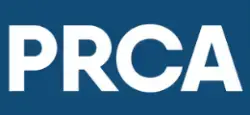 Consumers are inundated with images on a daily basis, making it difficult to differentiate what’s valuable information and what isn’t. As creative director, it is my job to create images (photo, graphics and/or illustrations) that grab attention and convey a message. Here are some very particular questions that I keep in mind when I design.
Consumers are inundated with images on a daily basis, making it difficult to differentiate what’s valuable information and what isn’t. As creative director, it is my job to create images (photo, graphics and/or illustrations) that grab attention and convey a message. Here are some very particular questions that I keep in mind when I design.
- What’s the hierarchy of information? If people just glance at the design what will they take away?
- How will this design look in its environment? Will it stand out in the crowd once it’s on a web page, on the grocery store shelf, in a magazine, etc.?
- Is the call-to-action prominent enough?
Attention spans are shrinking. There’s not a lot of time to get your point across, so you have to be concise. At the same time, people process visual content faster than text, 60,000 times faster, according to 3M Corporation and Zabisco. And 90 percent of all information transmitted to the brain is visual. So, how do you decide if an image meets the above criteria?
There’s a lot of psychology behind how and why people connect with images. Research indicates that the most engaging photos show body parts up close without showing a face. That style of images has an 81 percent engagement rate, whereas photos that don’t show a human have a 78 percent engagement rate. Images that showed at least one person’s face are the lowest at 62 percent, according to Hootsuite. The more people in the photo the lower the engagement.
An image with a lot of shapes creates visual chaos. People are much more drawn to quiet places where the eye can rest. Using blocks of color and open spaces are the effective ways to draw the reader’s eye to the most important information. These are not the only things to consider, but it will help you get moving in the right direction.

